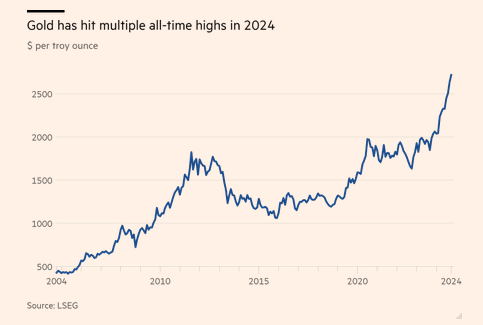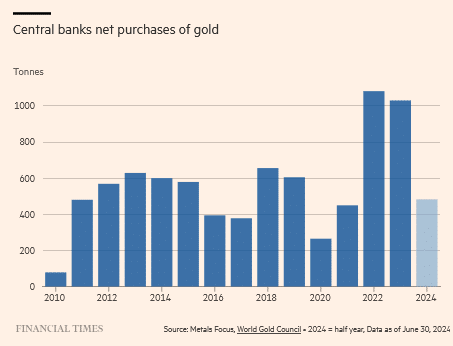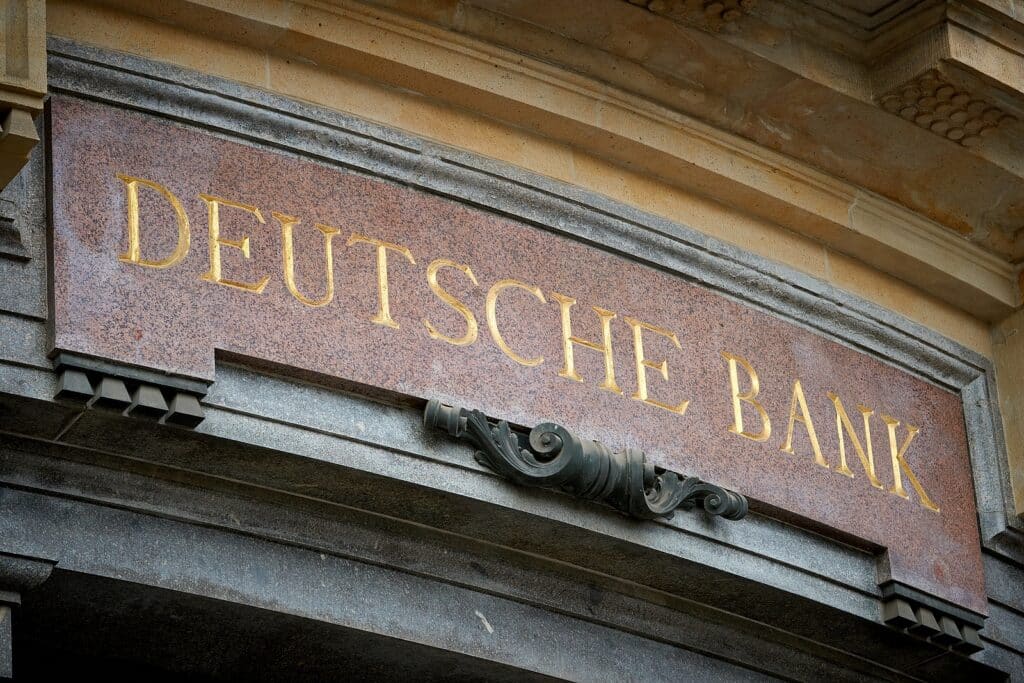Buying of the precious metal reflects rising interest in alternatives to the dollar-based financial system
Something strange has happened to the price of gold over the past year. In setting one record level after the other, it seems to have decoupled from its traditional historical influencers, such as interest rates, inflation and the dollar. Moreover, the consistency of its rise stands in contrast to fluctuations in pivotal geopolitical situations. Gold’s “all-weather” characteristic signals something that goes beyond economics, politics and higher-frequency geopolitical developments. It captures an increasingly persistent behavioural trend among China and “middle power” countries, as well as others. And it is a trend that the west should be paying greater attention to.
Over the past 12 months, the price of an ounce of gold on international markets has increased from $1,947 to $2,715, a gain of almost 40 per cent. Interestingly, this march up in price has been relatively linear, with any pullback attracting more buyers. It has occurred despite some wild swings in expected policy rates, a wide fluctuation band for benchmark US yields, falling inflation and currency volatility.

Some may be tempted to dismiss gold’s performance as part of a more general increase in asset prices that, for example, has seen the US S&P index gain about 35 per cent in the past 12 months. Yet that correlation itself is unusual. Others will attribute it to the risk of military conflicts that have seen so many innocent civilians lose their lives and livelihoods, together with massive destruction of infrastructure. Yet the price journey suggests that there may well be a lot more going on.
Consistent foreign central bank purchases have been an important driver of gold’s strength. Such buying seems not just related to the desire of many to gradually diversify their reserve holdings away from significant dollar dominance despite America’s “economic exceptionalism”. There is also interest in exploring possible alternatives to the dollar-based payments system that has been at the core of the international architecture for some 80 years.
Ask why this is happening and you will normally get an answer that mentions a general loss in confidence in America’s management of the global order and two specific developments. You will hear about America’s weaponisation of trade tariffs and investment sanctions, together with its reduced interest in the rule-based, co-operative multilateral system that it played a pivotal role in designing 80 years ago.
You will also hear about Russia’s ability to continue to trade and grow its economy despite some of the country’s banks being ejected in 2022 from Swift, the international system that governs the vast majority of cross-border payments. It has done this by creating a clunky trade and payments alternative system that involves a handful of other countries. While inefficient and costly, this allowed Russia to bypass the dollar and maintain a core set of international economic and financial relations.
Then there is the aspect related to the conflict in the Middle East where the US is viewed by many as an inconsistent backer of both fundamental human rights and the application of international law. This perception has been amplified by how the US has shielded its main ally from a response to actions widely condemned in the international community.

What is at stake here is not just the erosion of the dollar’s dominant role but also a gradual change in the operation of the global system. No other currency or payment system is able and willing to displace the dollar at the core of the system and there is a practical limit to reserve diversification. But an increasing number of little pipes are being built to go around this core; and a growing number of countries are interested and increasingly involved.
What has been happening to the gold price is not just unusual in terms of traditional economic and financial influences. It also goes beyond strict geopolitical influences to capture a broader phenomenon which is building secular momentum.
As it develops deeper roots, this risks materially fragmenting the global system and eroding the international influence of the dollar and the US financial system. That would have an impact on the US’s ability to inform and influence outcomes, and undermine its national security. It is a phenomenon that western governments should pay more attention to. And it is one where there is still time to course-correct, though not as much as some would hope.
Read the full article HERE.


